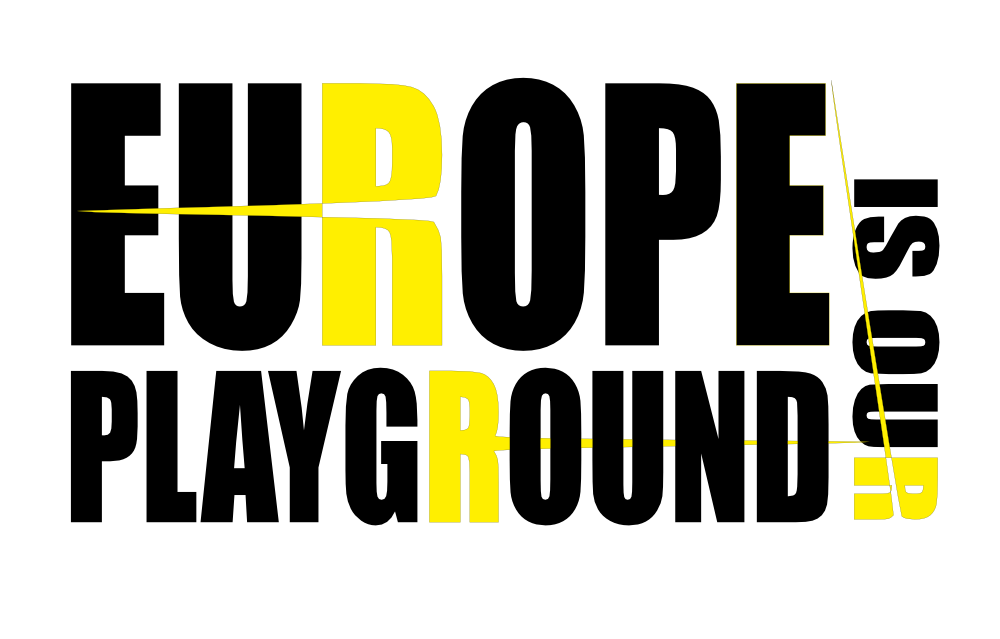Everything About Luminara di Santa Croce Lucca
Lucca’s enchanting Luminara Di Santa Croce Festival is a religious event whose roots can be traced back to the 8th century. The festival itself goes on for two days but the main attraction is on the evening of the first night when thousands upon thousands of candles are placed on the façades of the streets, churches and homes of the historic centre of Lucca – making for one of the most amoerpheric religious ceremonies in Italy.
Lucca is a quick train journey away from Florence and the Luminara di Santa Croce event is more than worth the trip. If you find this guide helpful please consider booking your hotel in Lucca via this link from which we may earn a small commission.
The Procession | Luminara di Santa Croce
The procession of the Holy Face (Luminara di Santa Croce) takes place each year on September 13 and traces the same route that the crucifix is said to have taken on its final journey through the city of Lucca, which we have outlined further below. It departs from St. Frediano at approximately 20:00, though people can already be seen lining the streets beneath the beautiful lines of candles much earlier, and the procession eventually arrives at the Cathedral of St. Martin between 22:00 and 23:00.
One of the highlights, besides the candle lit route and the hundreds of representatives from Churches from all over the world is the singing that accompanies the parade – medieval in sound and stunning to witness. It’s somewhat macabre and dark – recalling a time when Christianity was very much a religion of fear and of total, unquestioned worship. This is a religious festival that has stayed so very close to its medieval roots that one feels a true, overwhelming sense of place – so very akin to the medieval city itself – where walls have stood for centuries and where churches, grand and gothic have invited worship for generations.
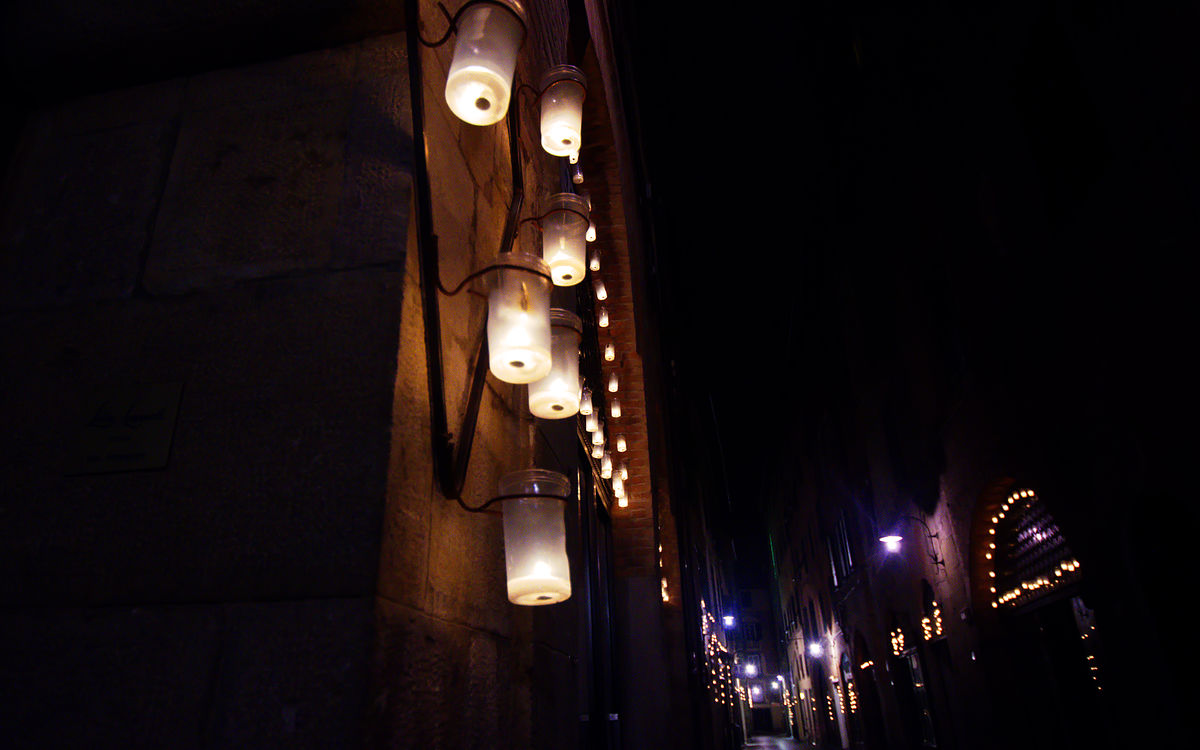
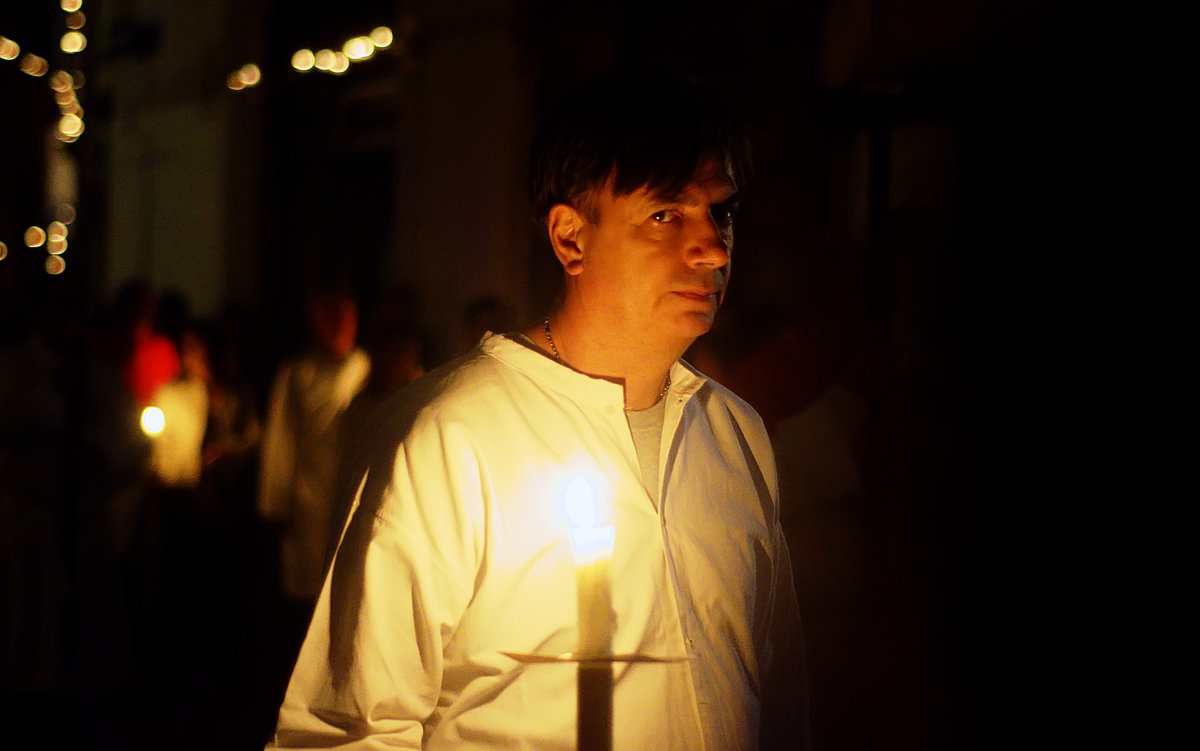
Compare the Luminara di Santa Croce to France’s Fête des Lumières (Lyon) for example. A festival which has barely 400 years of history, though was once celebrated in much the same way with candle lit processions and thousands of churches and homes lit by the flicker of candle and flame. An event, which was originally to ask Mary to save the city from the plague, and which has now turned into perhaps the biggest festival of lights on the entire planet, where thousands of neon lit parades take to the streets each year marching below arches covered in strings of thousands of multi-coloured bulbs, past buildings that are illuminated with state-of-the-art animations and through light and sound exhibitions that spread wonder with science and art — mostly forgetful of the festival’s religious past. In fact the only real reminder is the flickering of the candles on the windows of houses, flats, and in front of churches, but these are almost invisible when the main lights are switched on.
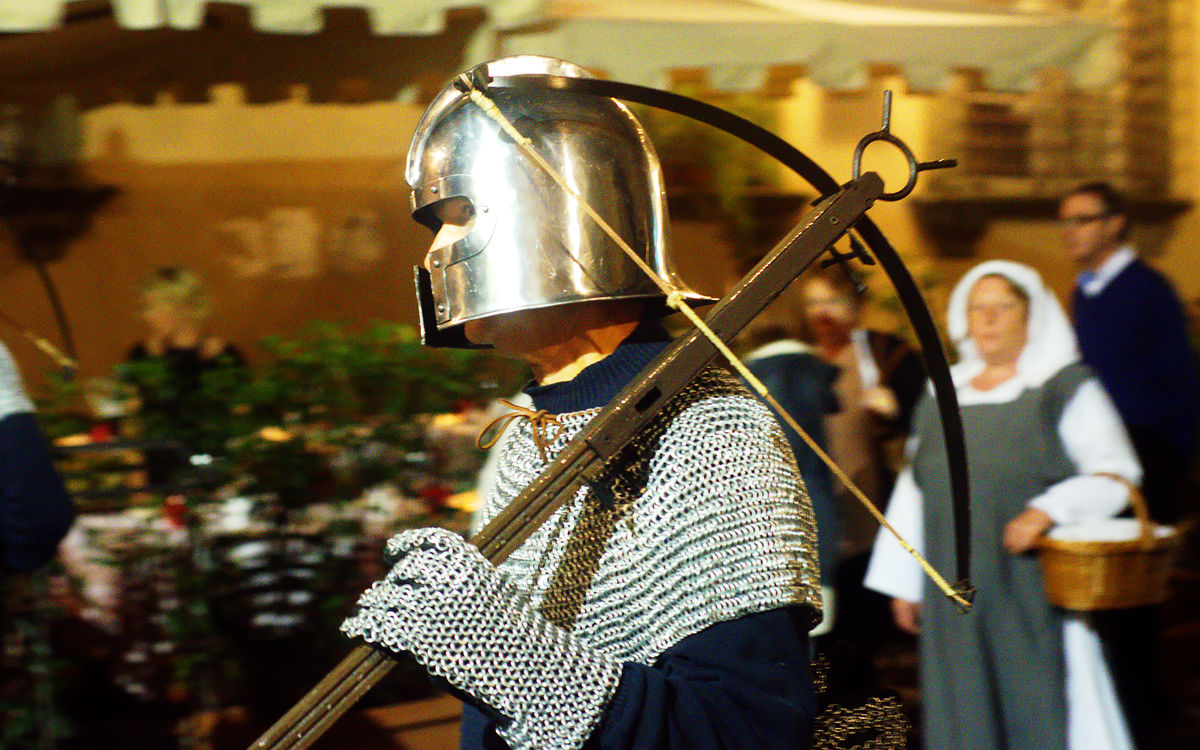
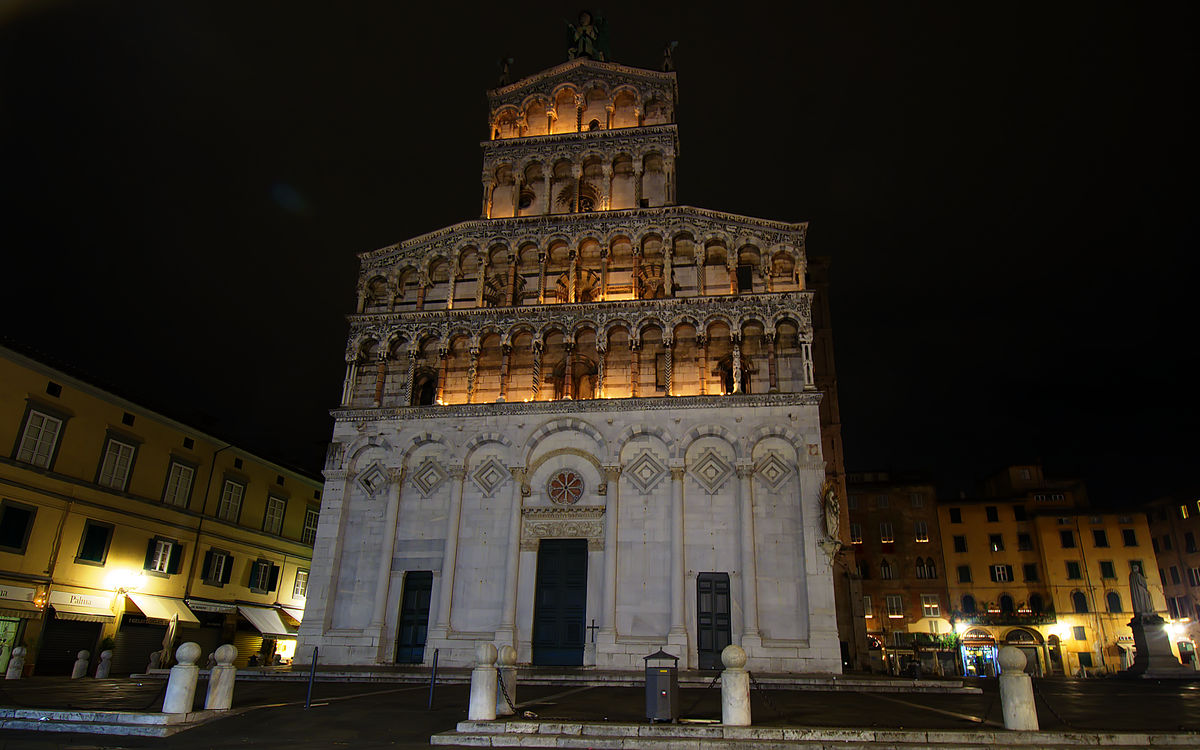
In stark contrast, the Luminara di Santa Croce wears its medieval history with immense pride. It seems that almost all of the town takes part in the processions, not just the religious part which is beautiful – with hundreds of candles being carried by the side of flags and other religious paraphernalia, but also the medieval procession that includes flag throwers, marching bands and costumed locals, who seem to thrive during the festival, watched by the cameras and eyes of hundreds (not hundreds of thousands like in Lyon) of eager tourists and perhaps one or two locals who aren’t a part of the festivities.
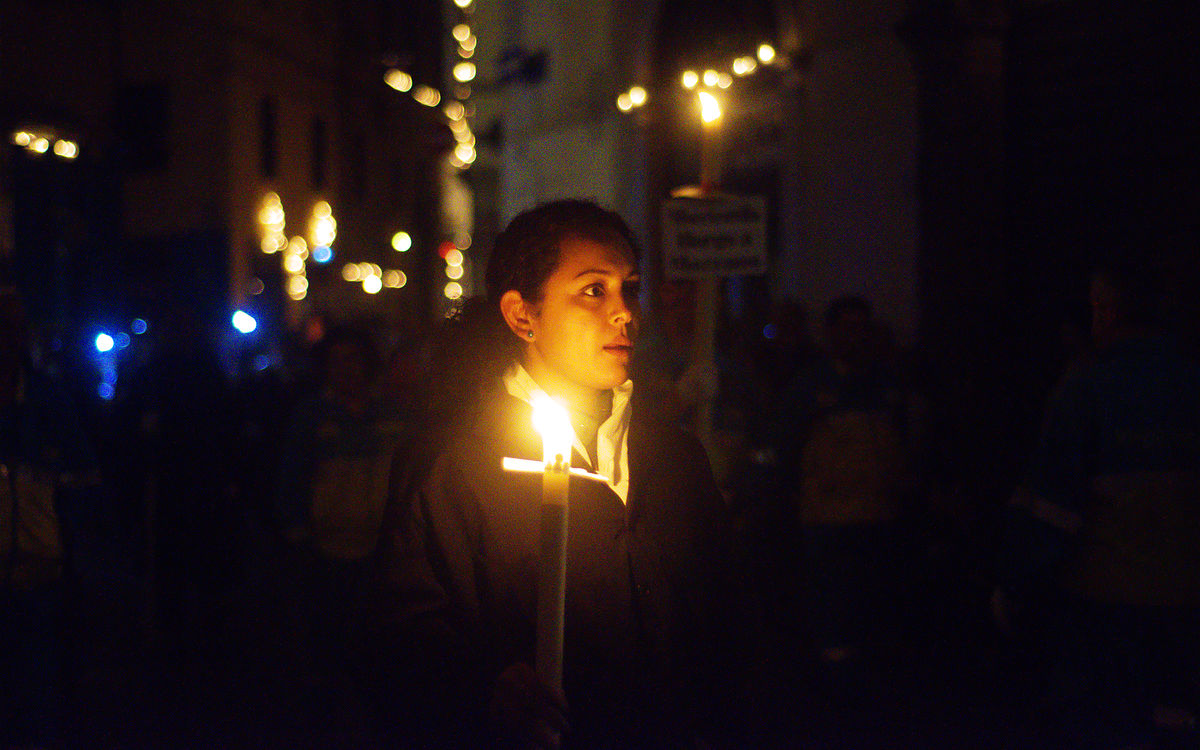
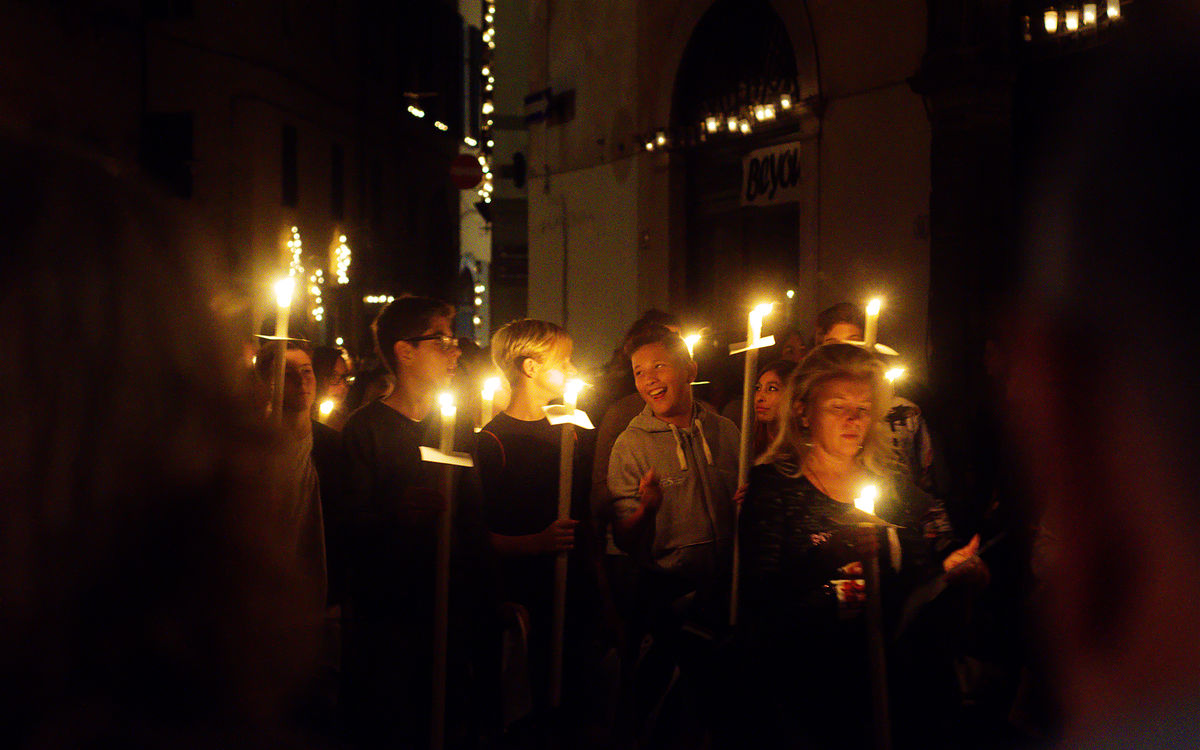
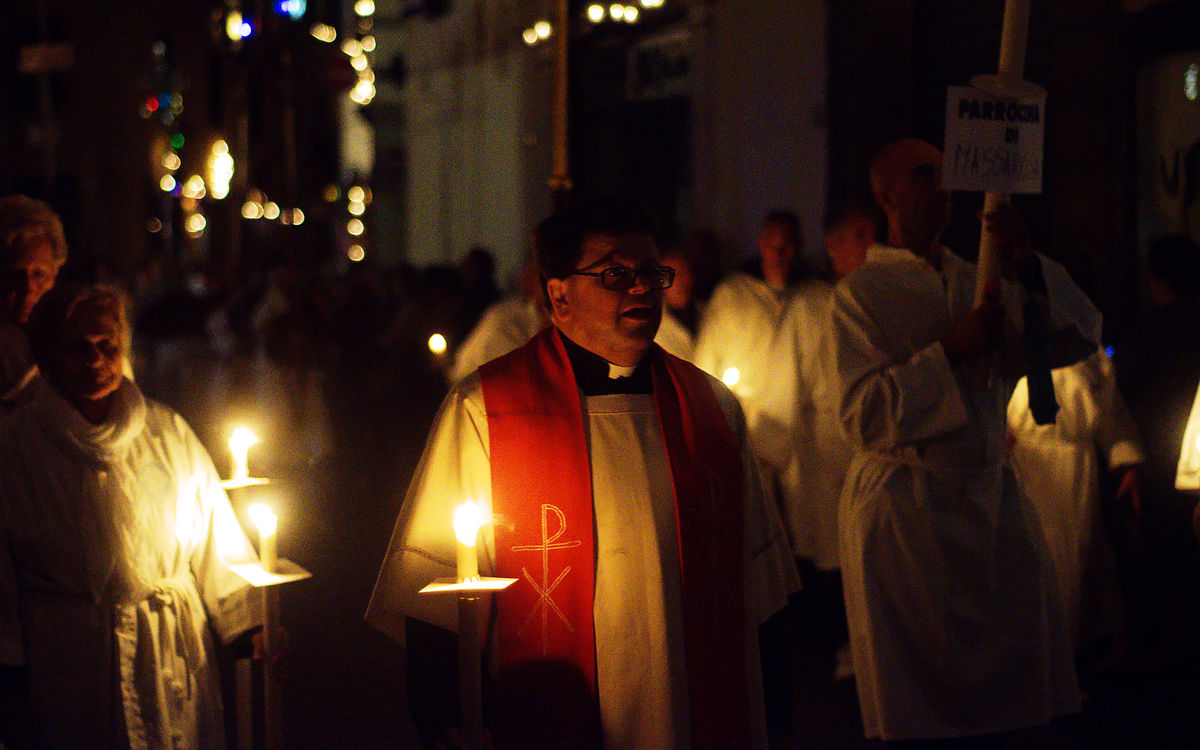
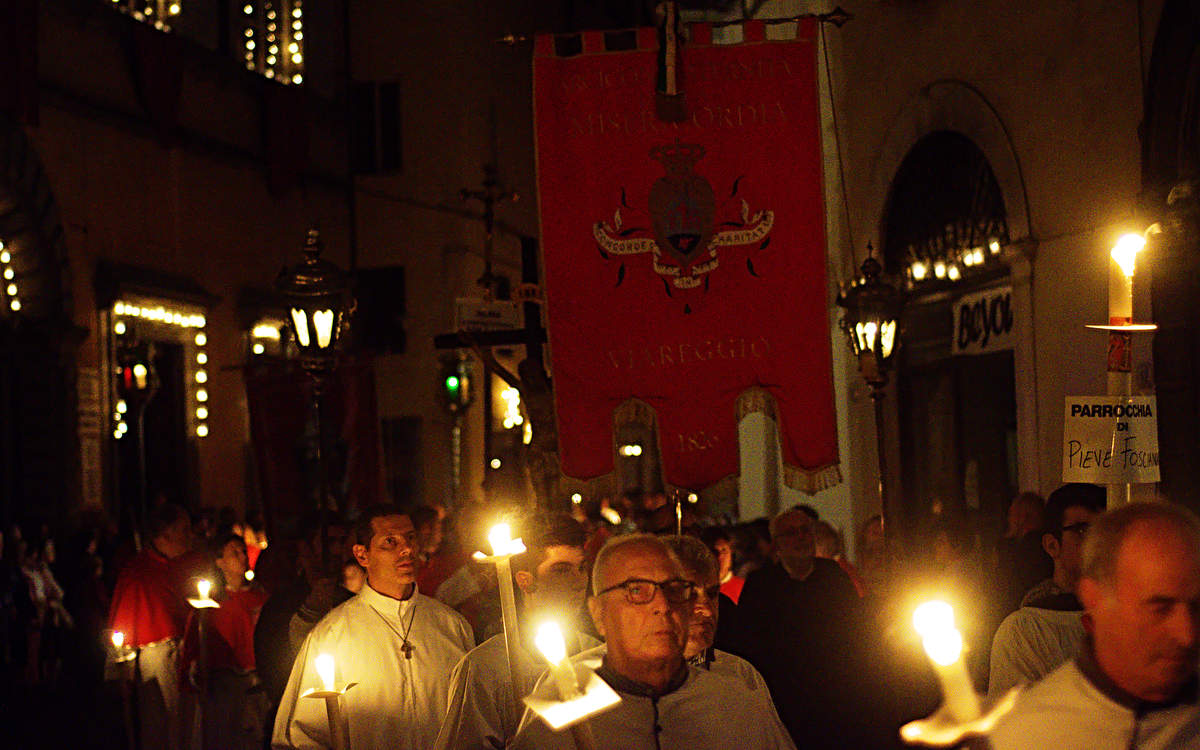
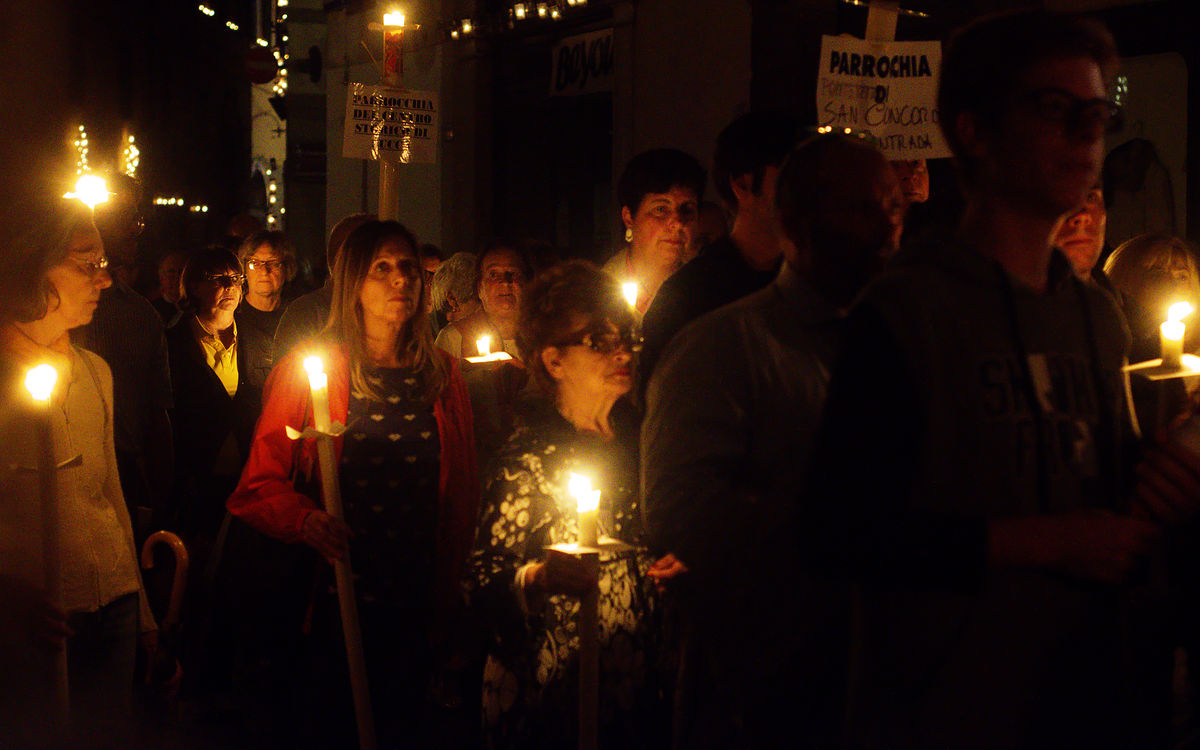
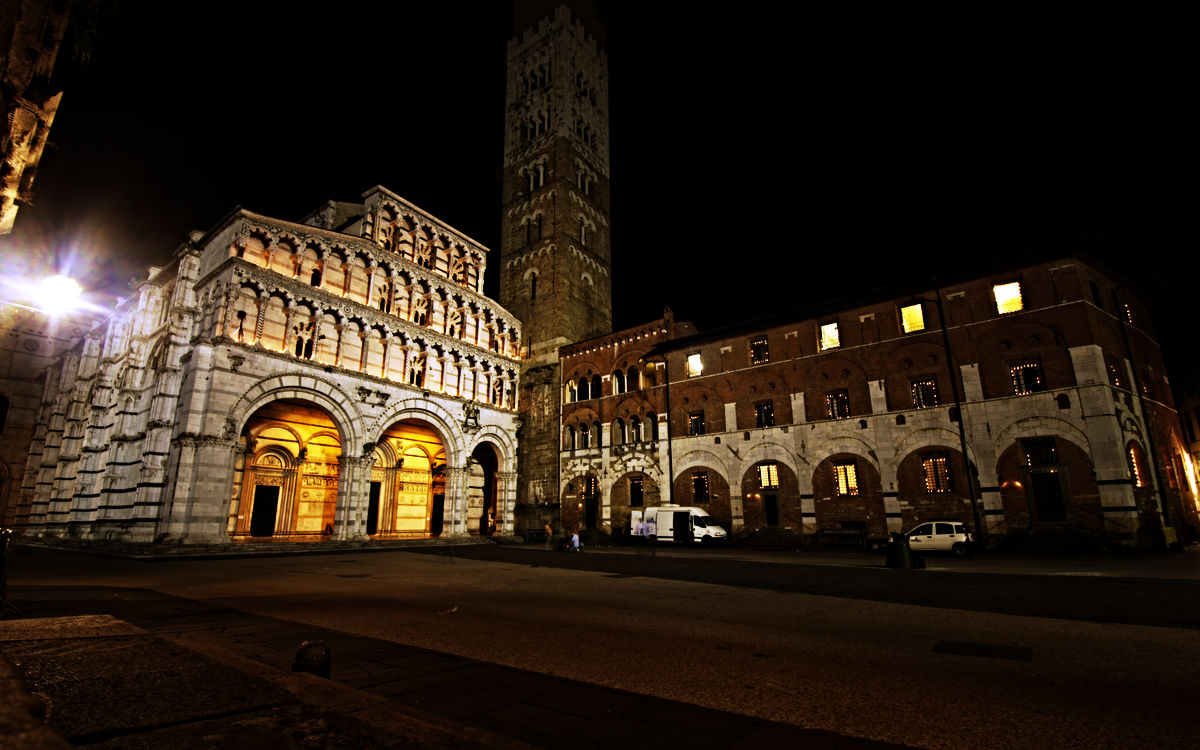
A History Of The Holy face
The festival has a beautiful story to tell. A story that starts more than 2000 years ago with the crucifixion of Christ and the two who took it upon themselves to inter Christ’s body into the tomb – Joseph from Arimathea and Nicodemus. This particular legend need only discuss Nicodemus – who on that day, was inspired to carve Jesus’s dying body on the cross. After an exhausting day, spent attempting to create a faithful visage of Christ – Nicodemus gave up and fell asleep having failed to carve the face of Christ. However, in true Christian style – when he awoke – as if by a miracle, the hard work had been done for him – the scene of the crucifixion had been carved perfectly on the wood – including of course, the face, which legend would have us believe was carved by an angel… and so begins the story of the Holy face or the Volto Santo.
The crucifix was rarely heard of since then, remaining hidden for centuries (some say it was buried for 7 centuries), Nicodemus fearing that the persecution against Christians of the time could lead to the Crucifix’s destruction. The legend of the Volto Santo claims that the cross sailed from Jordan all the way to the banks of the present-day Tuscan countryside – in a ship that was unmanned and so leaving everything to fate – in the year 742. Little did the people know, that in the night, as the ship bearing the Holy Face sailed ever closer to the shores of Italy, the Bishop of Lucca was enjoying a deep sleep, dreaming of the Volto Santo and its arrival to his homeland. When the ship appeared the morning after, the Bishop, with a legion of clerics and Lucchesi convinced everyone to have the Volto Santo placed under the jurisdiction of Lucca backed up of course by his dream. This part of the legend has various stories attached to it including the Crucifix having a few stops along the way though most settle on the fact that the boat carrying the Volto Santo came to a stop in the port town of Luni, a now abandoned Tuscan town. Apparently, when the towsfolk attempted to retrieve the crucifix, it moved away from them, but when the Lucchesi appaeared, the boat opened its gangplank inviting them aboard to freely take the Crucifix.
When the people saw the Holy Face they wept tears of joy and cried Gloria in excelsis!
This is where the story gets truly interesting – and it’s here where we see the roots of the Luminara di Santa Croce begin to come together. Nicodemus’s crucifix was placed under the protection of the San Frediano Church in Lucca where it was to be venerated forevermore, though the morning after when the town’s people awoke they were again shaken by a peculiar event – and unaware once more of the acts taking place as they slept. This time the cross had vanished, and so the townsfolk began a desperate search, but it wasn’t long until it was located a short way across the town in a garden close to the Cattedrale di San Martino Lucca’s exceptionally beautiful Duomo. Having such an unexplainable (perhaps it’s simply a case of a clever, light fingered priest?) event convinced the people that it was the Volto Santo’s wish to be kept within the Duomo and so it’s been there ever since. And this last route that the Holy Face took from San Frediano Church to the Cattedrale di San Martino, is the same route that the progression during the Luminara di Santa Croce takes each year, though sadly, this no longer includes the crucifix itself presumably due to the fragility of the wood.
There are literally hundreds of stories attached to the Volto Santo but perhaps it’s even more interesting to discuss the incredible impact that the Crucifix has had on both the people of Lucca and those of Europe.
The crucifix’s immense popularity led to thousands of pilgrims travelling to Lucca from every side of the continent, but the Volto Santo was, until 1921, only available to view on select occasions – during the Luminara di Santa Croce for example – which is very much in-line with typical Catholic policy for such relics – such as the virgin’s girdle in Prato. Medieval Lucca printed its coins with the face of the Volto Santo, Dante included a reference to the Holy Face of Lucca in his Inferno (Canto XXI), and William The II of England used “By the face of Lucca” as his customary oath.
Where is The Crucifix?
Presently, the Volto Santo stands within an absolutely stunning free-standing octagonal Carrara marble chapel (known as the Tempietto or Little Temple), which was built in 1484 specifically to house the crucifix, by Matteo Civitali, the sculptor and architect from Lucca. Simply enter the Cattedrale di San Martino and direct yourself to the left aisle of the Dumo and you should see the golden reflection of the tempietto almost immediately – Volto Santo, the Holy Face of Lucca is inside.
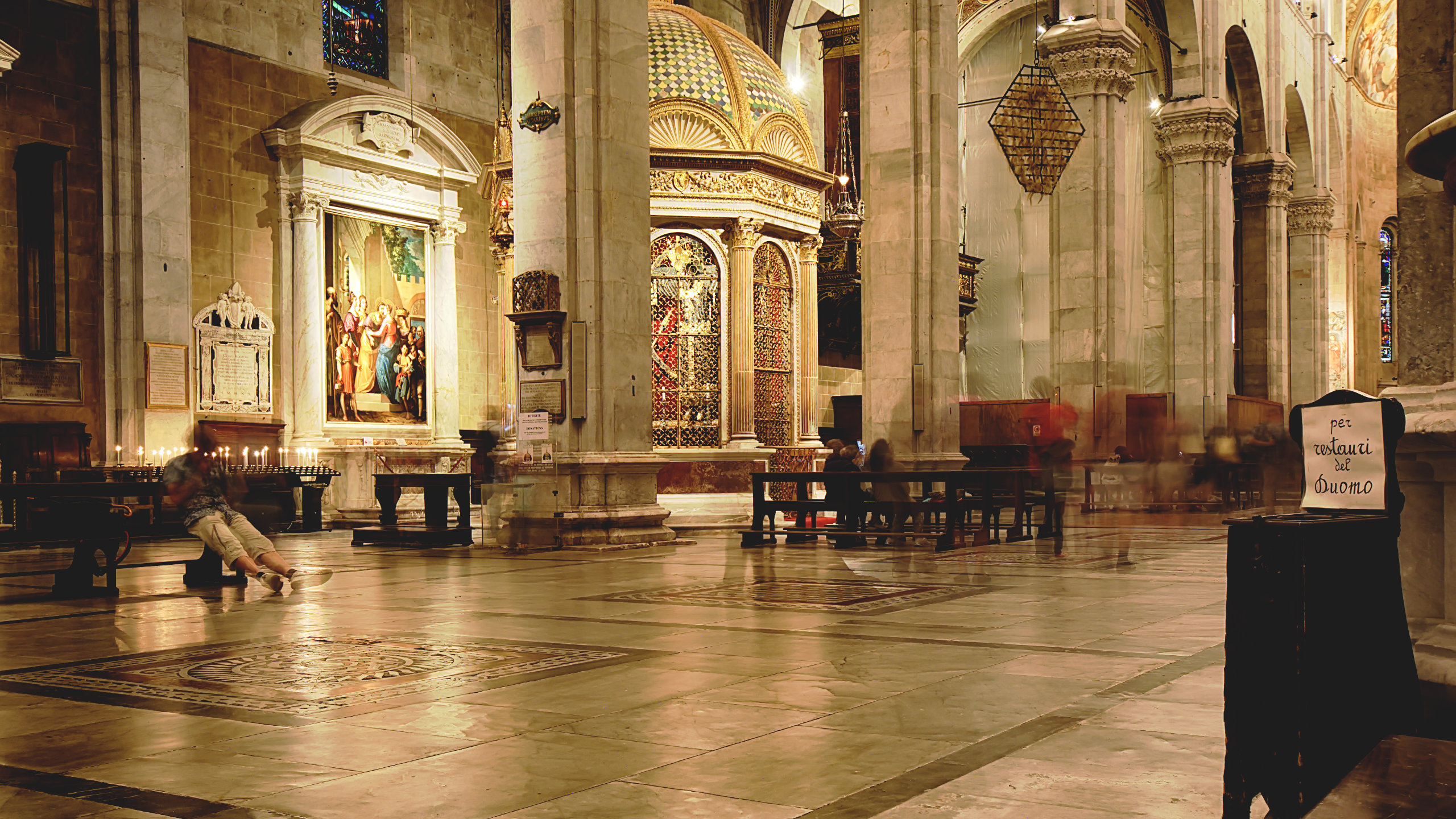
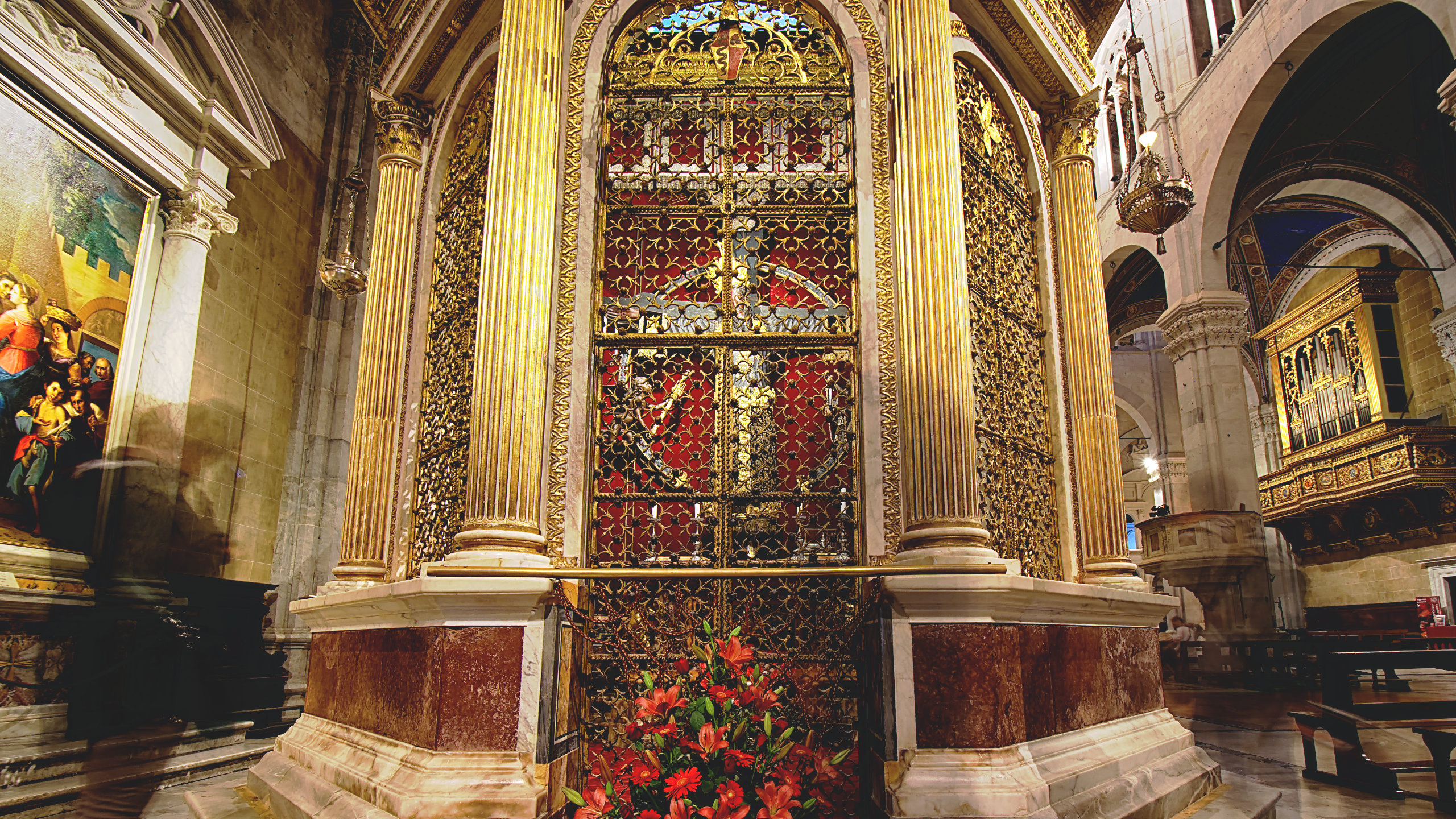
Is It Really Nicadomus’s Crucifix?
The cross that legend says was carved by Nicodemus’s “angels”, it would appear, has been lost to time, damaged beyond repair by relic hunters, or possibly stashed away in the Vatican vaults. The one that stands today is an early thirteenth-century copy of the original which some have credited to the circle of Benedetto Antelami – though it’s worth noting that one of the very few scientific analyses of the Crucifix suggests that it dates back to the early 12th century. However, there’s also the story of an English Abbot – Abbot Leofstan of Bury St Edmunds – who recorded that the inspiration for a life-sized crucifix he had made for Bury St Edmunds, had come from a similar crucifix that he saw in Lucca on his way to Rome – the good Abbot died in 1056.
The Luminara di Santa Croce takes place every year on the evening of the 13th of September in Lucca – in the Tuscan countryside.
If you found this review helpful, please consider booking your hotels with this link, from which we may earn a small commission.
